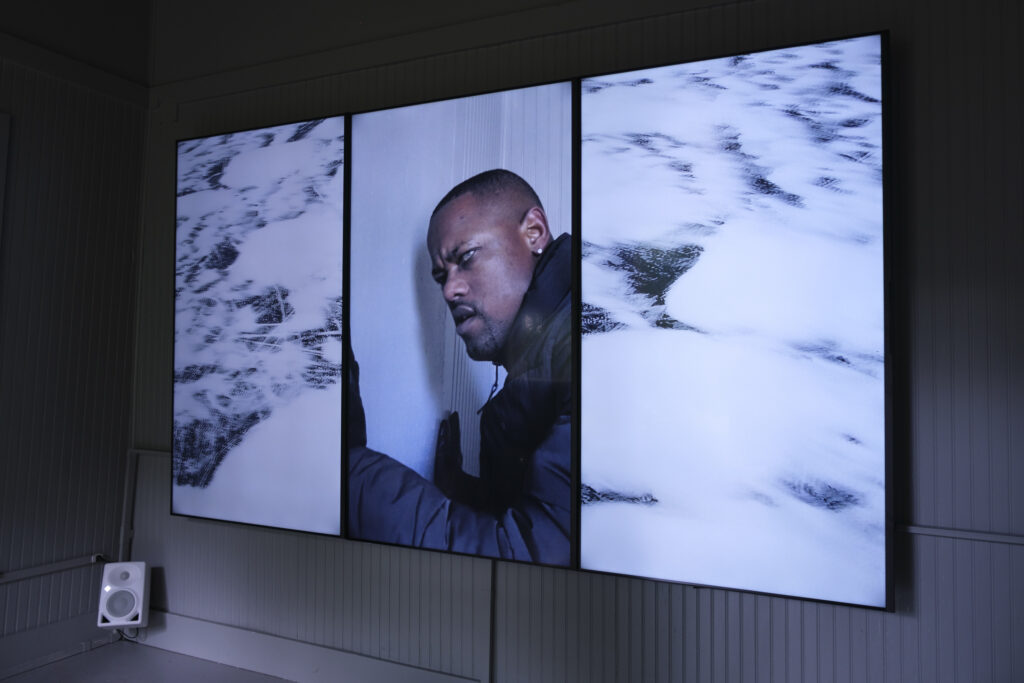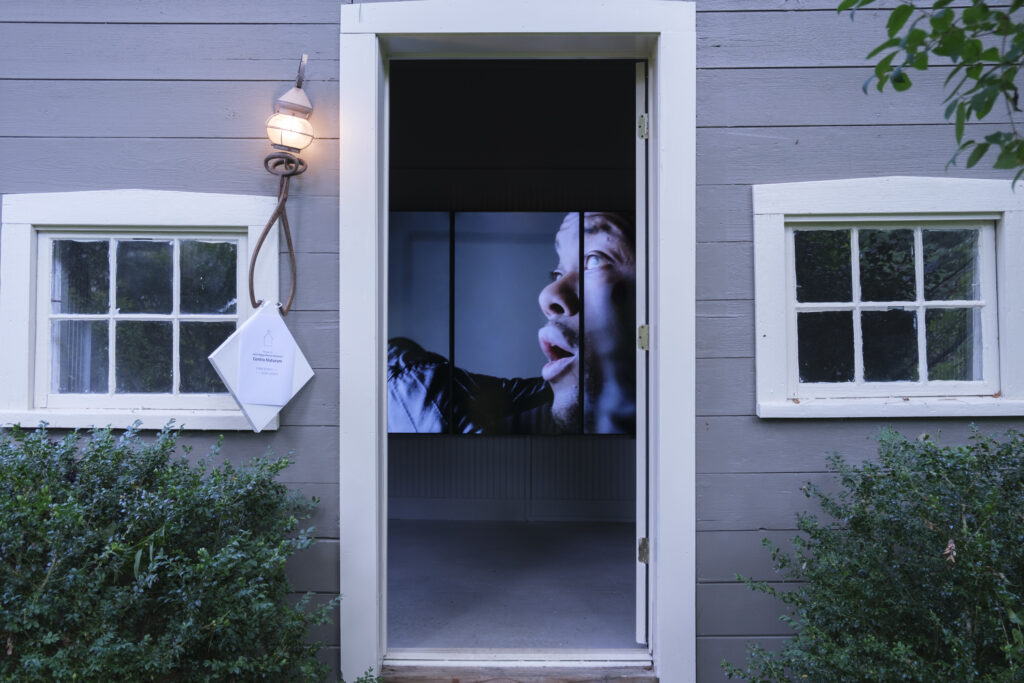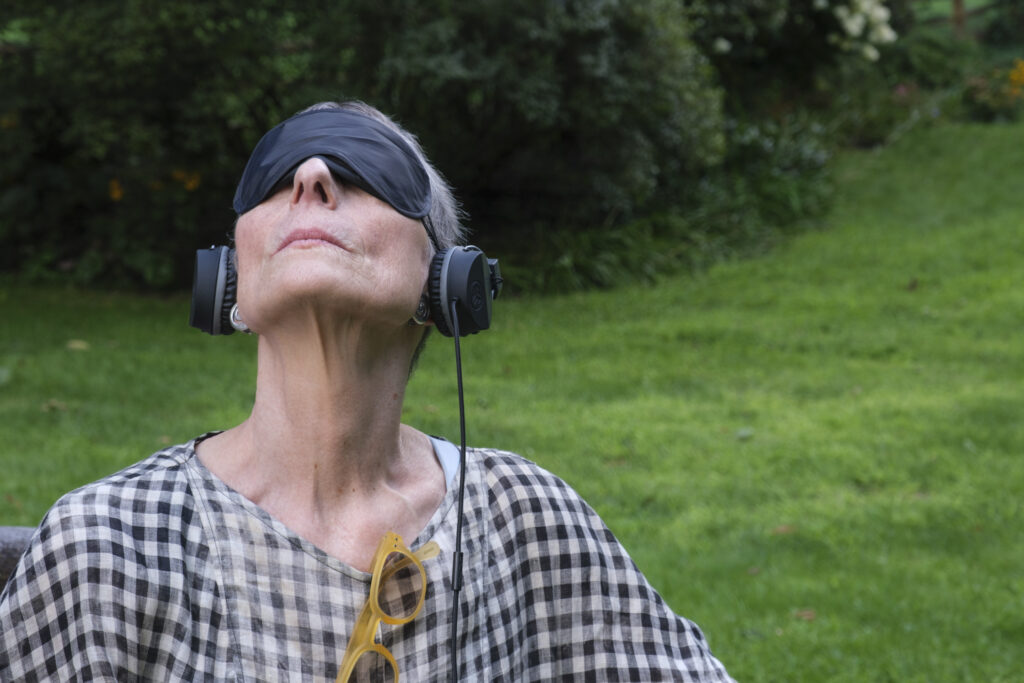Janet Biggs is much more than a video artist. She is an explorer traversing the very edge of human experience, whether it is the outer rim of tough earthly terrains or the interior space of a living body. Often juxtaposing images of living with disabilities alongside footage of conditions in the most extreme places on the planet, Biggs takes viewers on a journey through physical discomfort to spiritual liberation.

Biggs may be a pioneer, but she rarely travels alone. In this installation at the ICEHOUSE, she collaborated with Davian Robinson, a blind dancer and choreographer. Together they convey the sense of movement in a dimly lit, foggy landscape experienced by Robinson, who can only sense shadow and light. The result, Contra Naturam, is a serene and beautiful example of grace in the face of trauma.
Inside the ICEHOUSE, visitors encounter a sound bath of terrifying noises: hands pounding on walls and sharp blades against cracking ice. On a giant screen, a 3-channel video projects intermittent images of close-ups of Robinson’s face or of his undulating body as he navigates this confining gray interior wooden space (filmed in January 2024). These mesmerizing visuals are juxtaposed with clips of racing iceboats streaming across a seemingly endless frozen lake (filmed in Rovaniemi, Finland in March 2024). As the boats coordinate their movements like Busby Berkeley dancers, the real-life blind dancer tries to evaluate his movements with hands touching the walls and floor of the icehouse. There was a magical sensation created by viewing this filmic winter wonderland while a bright green summer landscape glowed through the windows.

Once leaving the ICEHOUSE and meeting the hot August day, viewers were treated to Icehouse Walk, an audio experience created by Robinson that simulated a blind person’s sensations. Played on individual headphones while wearing a black-out mask, the Walk guides participants around the surrounding grounds, reciting the conditions encountered when recorded last winter. The experience is both challenging and meditative.

Contra Naturam (or Contrary to Nature) is a reference to the weirdly insensitive remarks by the late William F. Buckley, an ultra-conservative commentator who preceded today’s right-wing pundits. Buckley famously decried the 1987 attempt of a blind sailor to navigate the Atlantic Ocean:
“I wouldn’t take a blind person to the Grand Canyon or to the ballet. …It is profane to suppose that a cripple can run, a deaf man hear, or a blind man see. … Why would you take a blind man to a ballet? … A ballet is to be distinguished from music because it is a form of dance. … It is against nature, Contra Naturam.”
Since Buckley lived in Sharon, where the ICEHOUSE is located, and famously wrote the opus of American Conservatism, The Sharon Papers, Biggs couldn’t resist his challenge. Robinson, a dancer who is also a Paralympic athlete, proves through his vivacity and skills that Buckley was a chauvinist, very blind to human potential.
The success of these works has everything to do with the constraining structure—what was an eighteenth-century icehouse—on the property of the artist and curator K.K. Kozik. Reinvented as an alternative space in 2018, the ICEHOUSE is of limited space which could be challenging for some artists but has proved liberating for many of those who have shown there. It proved the perfect frame for Biggs’s and Robinson’s effort to transform confinement into freedom.
This exhibition was organized by the ICEHOUSE, where it was on view from August 10 to September 14.
Barbara Pollack is an art critic and curator based in New York City who has written about Chinese contemporary art since the late-1990s. Her most recent book on the subject is Brand New Art from China: A Generation on the Rise (Bloomsbury, 2018) and in 2022, she curated Mirror Image: A Change in Chinese Identity at the Asia Society Museum in New York City.